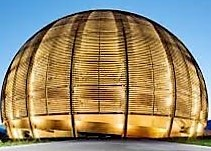Speaker
Description
How elements are made in the Universe is an open long-standing question. Several processes are invoked to explain the observed elemental abundances in our Solar System [1] and in our galaxy [2].
Complex astrophysical simulations are used to study the origin of the heavy elements and quantify the contribution of the r-process to the observed elemental abundances (see e.g. [3]). The r-process proceeds through very neutron rich nuclei, most of them experimentally inaccessible so far and theoretical estimates make up for the lack of experimental data, introducing large uncertainties in the calculated abundances [4]. The main decay mode of such nuclei is beta-decay accompanied by the emission of one or more neutrons. Accurate experimental data of these nuclei, particularly their half-lives (T1/2) and neutron emission probabilities (Pxn), will help to fine-tune theoretical models and thus contribute to a reduction the uncertainties for the calculated elemental abundances. This will allow a more meaningful comparison with the observed abundances and help to constrain the astrophysical conditions better, e.g. via reverse engineering methods [5].
The BRIKEN (Beta delayed neutron measurements at RIKEN) collaboration was launched in 2017 to provide precise new measurements of T1/2 and Pxn of very neutron rich nuclei which are important for the r-process nucleosynthesis [6]. We will report about the astrophysical impact of new experimental values for 38 nuclei between 75Co and 94Br, of which 12 Pxn and 7 T1/2 are measured for first time while improving the remaining. Several explosive astrophysical scenarios were explored and we will present results for two, namely magneto-rotationally driven core-collapse supernova and disk ejecta in the aftermath of a neutron star merger. For these scenarios, sizable long range effects reaching lanthanides are observed.
References
[1] C. Sneden et al, Annu. Rev. Astron. Astrophys. 46.1 (2008)
[2] C. J. Hansen et al, Astroph. J.797 (2014).
[3] M. R. Mumpower et al, Prog. Part. Nuc. Phys. 86 (2016)
[4] J. J. Cowan et al, Rev. Mod. Phys. 93, 15002 (2021)
[5] M. Mumpower et al., J. Phys. G: Nucl. Part. Phys. 44 (2017) 034003
[6] J. Tain, et al, Acta Physica Polonica B 49, 17 (2018)
